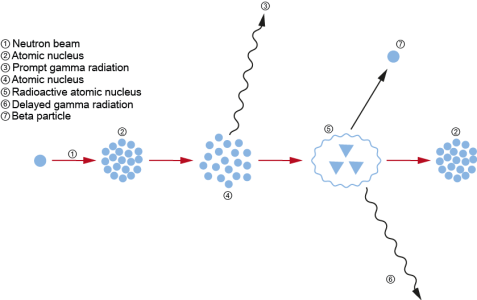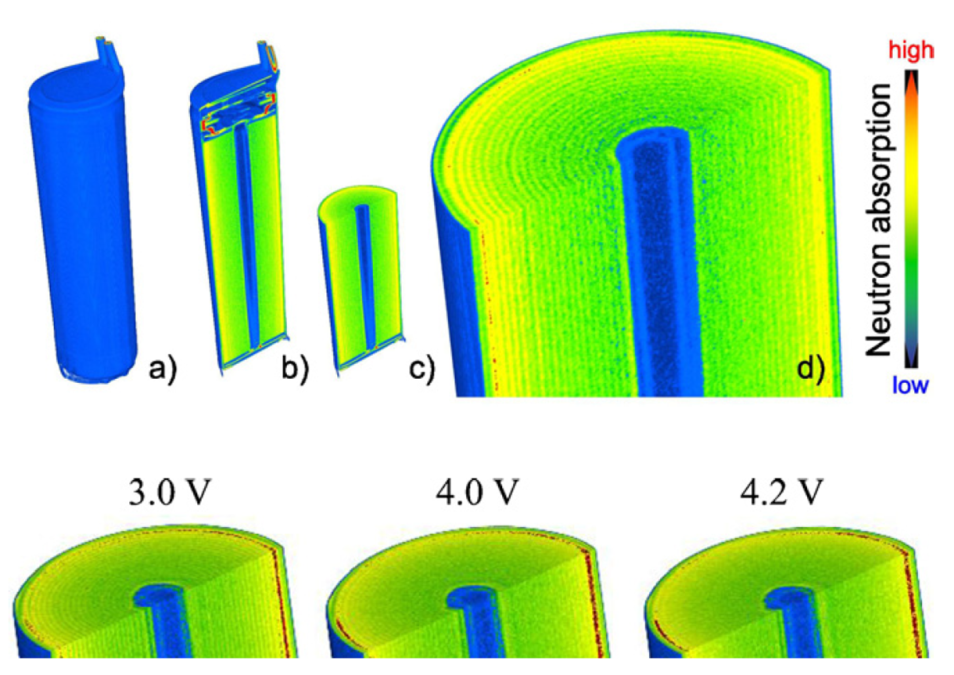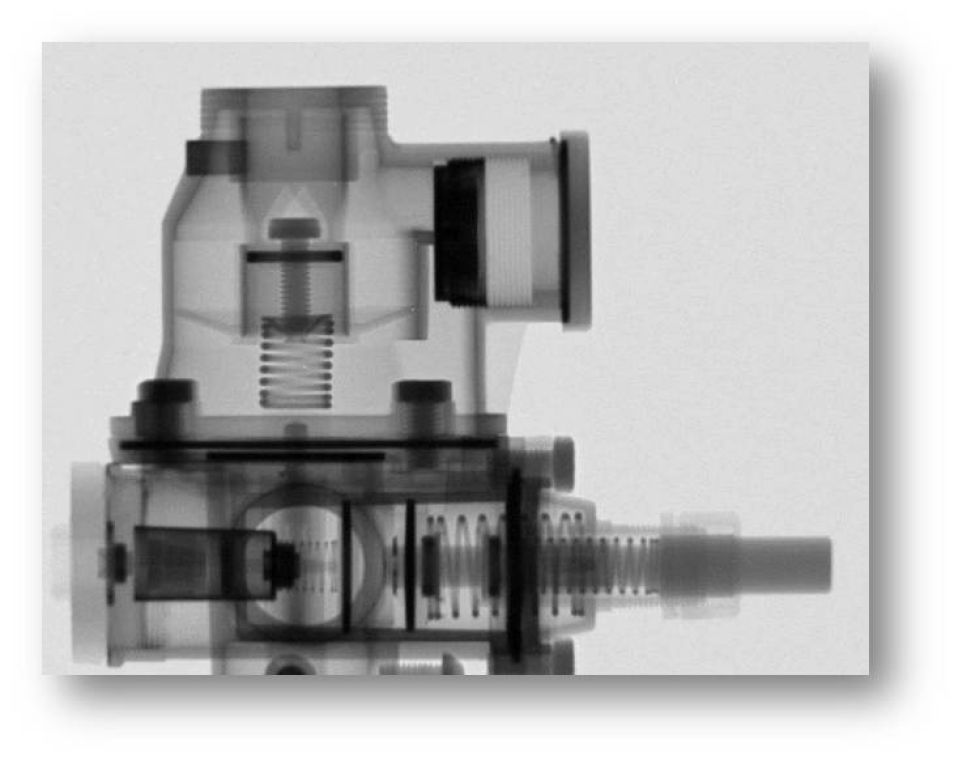MLZ is a cooperation between:
 > Technische Universität München
> Technische Universität München > Helmholtz-Zentrum Hereon
> Helmholtz-Zentrum Hereon
 > Forschungszentrum Jülich
> Forschungszentrum Jülich
MLZ is a member of:
 > LENS
> LENS > ERF-AISBL
> ERF-AISBL
MLZ on social media:

MLZ (eng)
Lichtenbergstr.1
85748 Garching
Imaging and Analysis
Neutron Imaging – Radiography and tomography facilities (ANTARES, NECTAR)
Neutron imaging is based on different attenuation probabilities as a neutron passes through an object. Hydrogen, for example, has a higher attenuation coefficient than lead or copper, which means that the attenuation for hydrogen will be stronger than for lead or copper. Together with the large penetration depth, accurate images with high contrast can be obtained even for extended objects.
The mechanisms of interaction of neutrons and X-rays with matter are extremely different from each other. Neutrons give a higher contrast for hydrogen-containing materials such as water or oil, compared to X-rays, making neutron imaging the method of choice for many special industrial and physical applications. Today, resolutions as good as 25 µm can be achieved with both radiography and tomography.
Classically, neutron imaging has been used for quality control purposes in industries that require precision machining such as aircraft or motor engineering. Today, one further important application of neutron radiography is in testing the performance of fuel cells by in situ imaging of water or hydrogen flow in the cells. Neutron imaging has also been used in the fields of cultural heritage, arts and archeology to authenticate paintings or examine artifacts made of metal or stone. Real-time imaging also allows visualizing movement within objects, such as oil flow in engines or water distribution in fuel cells without any kind of destructive intervention.
In neutron radiography (NR), 2D transmission images are obtained. In neutron tomography 3D data of an object giving information about its internal structure can be reconstructed from transmission data measured by irradiating it from many different directions.
While ANTARES makes use of cold neutrons, NECTAR uses fast (fission) neutrons. Fission neutrons can easily penetrate dense materials, thus NECTAR is used for the study of massive items and also for objects with high hydrogen content, where cold neutron radiography is not suitable. However, compared to NECTAR, ANTARES displays greater contrast allowing for better separation of neighbouring elements on the periodic table.
Neutron Activation Analysis (NAA) and Prompt Gamma Activation Analysis (PGAA)
Prompt Gamma Activation Analysis (PGAA) and Neutron Activation Analysis (NAA) are nuclear analytical techniques. They are based on the capture of neutrons by the atomic nucleus. Immediately after the capture process, the binding energy of the neutrons is released in the form of gamma rays (prompt gamma radiations). When a radioactive nuclide is formed, delayed gamma radiation can also be emitted (NAA). Both prompt and delayed gamma radiations are characteristic, i.e. their energy identifies the element and the isotope, while their intensities are proportional to their quantities. Thus, their detection can be used for the non-destructive analysis of a large variety of materials. While PGAA is mainly used for the analysis of light elements and gives the composition of the matrix of the sample, NAA is useful to determine the trace elements in the sample.
Applications are diverse and include the investigation of samples in the fields of material science (trace elements in semiconductors, superalloys), archaeology and cultural heritage (ceramics, coins, metals, and bronzes), geology and petrology (minerals, sediments), medicine (trace elements in tissues, nano-particles for cancer therapy), environmental research (air pollution, river pollution), investigation of nuclear materials, in situ monitoring of chemical reactions, determination of nuclear data and much more.
MLZ is a cooperation between:
 > Technische Universität München
> Technische Universität München > Helmholtz-Zentrum Hereon
> Helmholtz-Zentrum Hereon
 > Forschungszentrum Jülich
> Forschungszentrum Jülich
MLZ is a member of:
 > LENS
> LENS > ERF-AISBL
> ERF-AISBL
MLZ on social media:





